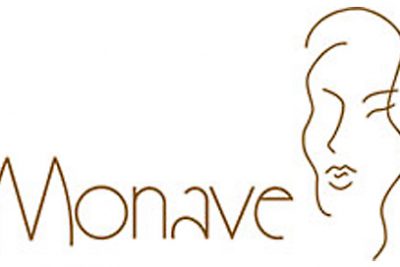Sodium Borate is another controversial ingredient on the Campaign for Safe Cosmetics/Skin Deep data base. In this post, I’ll be going over some basic information to help consumers understand from a practical perspective, what the hazard ratings, and test studies really mean.
Where does sodium borate come from? This is what Wikipedia says:
Borax occurs naturally in evaporite deposits produced by the repeated evaporation of seasonal lakes. The most commercially important deposits are found in Turkey, Boron, California, and Searles Lake, California. Also, it has been found at many other locations in the Southwestern United States, the Atacama desert in Chile, and in Tibet and Romania
It’s basiccally a salt that occurs when a lake starts drying up. The material is exposed above water line and is carried away in trucks.
So…if I could present a simple statement: Not all things ‘natural’ are ‘good’ for the human system. On the top end of the scale would be something like mercury, which wreaks havoc on human brain functions if it remains within the blood and fatty deposits.
So, as natural as sodium borate is, I’m not saying that you can eat it for dinner. The important information is what is a safe usage?
Here is a statement from the Campaign for Safe Cosmetics about toxicological studies (performed on rats) that were reviewed by the managers of the Skin Deep data base.
” Given the incomplete information made available by companies and the government, EWG provides additional information on personal care product ingredients from the published scientific literature. The chart below indicates that research studies have found that exposure to this ingredient — not the products containing it — caused the indicated health effect(s) in the studies reviewed by Skin Deep researchers. Actual health risks, if any, will vary based on the level of exposure to the ingredient and individual susceptibility — information not available in Skin Deep. “
Essentially, what is in question here, is whether you are spreading some raw sodium borate on your skin, and leaving it there, or whether there is a adobe acrobat xi standard percentage of sodium borate in your products that is low enough not to cause reactions.
The internet nets this statement about the toxology of Sodium Borate:
Borax, sodium tetraborate decahydrate, is not acutely toxic. [9] Its LD50 (median lethal dose) score is tested at 2.66 g/kg in rats. [10] This does not mean that it is safe, merely that a significant dose of the chemical is needed to cause severe symptoms or death.
So how do you, as the end consumer, know whether the percentage that Monave uses in its creams is safe? How can you trust a manufacturer with murky, unspecified, evidence out there?
I believe that the truth is in the product. At one time, I had contracted out for a manufacturer to craft Monave’s skincare line, as I was simply too busy with a new baby to do it anymore. ( I won’t mention the company’s name publicly). During the time that I was using the facial creams made by this supposedly pure manufacturer, my face continually broke out. I had dehydrated, and acneic skin. Thank heavens for my mineral foundation at this time which covered and soothed the constant inflammations. Their explanation was that I was sensitive to essential oils (which I’m not). I found out later, after discontinuing our relationship, that this company was buying bases from a vendor that routinely uses allergens, and repackaging it as a handmade product, and that there were many ingredients in it that I was allergic too. ( I have extremely sensitive skin). Once I went back to making my own, my skin healed, and I now have a manufacturer that I can trust.
So truthfully, if you apply our Daily Rose Facial Moisturizer day after day, and your skin improves, I think it would be safe to say that there wasn’t enough sodium borate in the product to irritate your skin, otherwise it would be irritated. Makes sense? The proof is in the product.
What is borax for anyway? It softens and makes the beeswax in a cream, ‘spreadable’. If you put beeswax in a cream, and you don’t use sodium borate, it becomes a bit sticky, and doesn’t move under your finger. The two go hand in hand.
So, that begs the question: Why use beeswax in a cream? It creates a water-in-oil emulsion. That means that droplets of water are surrounded by droplets of oil. This creates a very moisturizing cream, especially helpful for dry skin sufferers.
To bind oil and water together (that’s what a cream is, essentially), without beeswax, the alternatives are mainly synthetic, or plant derived emulsifiers. (one to avoid is emulsifiying wax NF which has polysorbate 60 in it) that create a oil-in-water emulsion. A cream made this way dries faster on the skin, and doensn’t moisturize quite as intensely.
The other advantage to beeswax is that it is a wonderful preservative, very important for a natural product line that is using minimal preservatives. And has many skin-healthy properties associated with ingredients made by bees, such as honey. So in summary:
-
Sodium borate is a naturally occuring mineral.
-
It’s an essential element in a handmade beeswax cream.
-
You shouldn’t eat it or slather it all over your skin
-
When used properly, in low concentrations, it is a perfectly safe ingredient to use in skincare
-
The capaign for safe cosmetics states that products containing it have not been proven to be unsafe or toxic.
-
The Campaign for Safe Cosmetics requires vendors, such as Monave, to report the percentage of sodium borate in products (which we have done), ,to ensure that is being used properly.
Well, I hope that this information is at least somewhat helpful.
Deborah Bilezikian,
President
Monave Mineral Cosmetics



Jasmine Ward
natural cosmetic is always the best thing that you can use on your face and body. ‘,;
Owen Bell
natural cosmetics is the best for skin because they have very minimal side effects compared to artificial cosmetics’,:
Acne Treatment
natural cosmetics are good because they are hypoallergenic~”-
Transistor
most cosmetics today are made up of artificial products that can harm the skin, there are still few natural cosmetics on the market *””
Emma
Sodium Borate and Borax aren’t the same thing?
Herman
Glad to be among the visitors on this awe inspiring site :
D.
Werner
Ι was suggested this blog by mу cousin. I am no longer sure whether or nnot this publish is written
by way of hiim as nbody else recognize such designated
apprοximately my trouble. You are amazing! Thank you!
top
Awesome article.